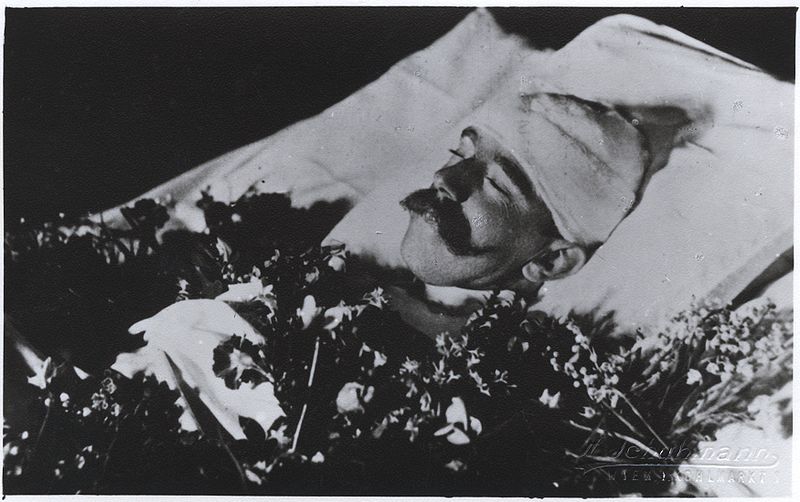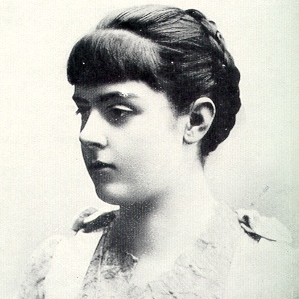Morbid Monday: The Unhappy Prince and the Dead Baroness
You know what I love about the internet? This:
That I can send out a request for suggestions from my desk in the San Francisco Bay Area to my Atlas colleagues in New York, Washington DC, Los Angeles and Fez, Morocco (among others):
I am looking for examples of deaths that changed the course of history for an upcoming Morbidmonday thing, and I need your brains: please send me your suggestions!
And get back, within minutes, all manner of fantastic suggestions including this one, from Dylan:
Well there is of course our man Archduke Franz Ferdinand which kicked off WWI… Actually in the case of Franz Ferdinand, it is really Rudolf, Crown Prince of Austria’s suicide that caused Franz to be in line for the throne, setting up the line of events.
So Rudolf is the first dead domino there.
Wait. What?
So that’s awesome, but really the wonderful thing about the internet is that I was then able to spend the next several hours and most of this morning compulsively looking up the story of Rudolf and the murder-suicide scandal that rocked 19th century Vienna and inspired a slew of books, films, and ballets.
The story has lots of elements to recommend it to the obscure history lover: sex and scandal, a tragic murder-suicide (or was it?), missing bodies, severed heads, and a legacy that that led Europe into the depths of war. Here. I share with you:
The Mayerling Incident

The players:
 Rudolf Franz Karl Joseph, Crown Prince of Austria
Rudolf Franz Karl Joseph, Crown Prince of Austria
He was 30. She was just 17. He was the heir to the empire and she was a young baroness, and they were lovers.
On the morning of January 30, 1889 their bodies were discovered by the staff of the prince’s hunting lodge at Mayerling (in Austria, outside Vienna). By all appearances the prince had shot Mary some time in the night, then sat with the body and booze until he worked up the courage to shoot himself early the next morning. They both left behind several suicide notes.
Upon receiving the news, the horrified royal family (including Rudolf’s wife Stephanie) flew into action, announcing Rudolf’s official death of heart attack, and smuggling Mary’s body out of the lodge, dressed in street clothes and propped between two men in a carriage. Despite the obvious suicide, his body would be interred in Imperial Crypt in Vienna. She was buried in a plain box, at night, in a nearby cemetery.
Almost immediately rumors began to circulate about the pair, ranging from murder conspiracy plots to musings on their Romeo and Juliet fate. But these were no star-crossed lovers. In fact, Rudolf had spent the previous evening in the arms of his other mistress, whom he had tried, unsuccessfully, to convince to die with him first.

Rudolf was the only son of Emperor Franz Joseph I and the Empress Elisabeth of Austria. His father was famous for his coldness and affairs, his mother for her exquisite beauty and constant traveling. Rudolf was primarily raised by his grandmother, and he was becoming known for his eccentricities and inconveniently liberal politics.
From a young age Rudolf displayed a passion for natural sciences, particularly for birds, publishing 40 ornithological works and assembling vast ornithological and mineralogical collections. His bird-and-rock nerdiness was offset by matched passions for hunting and whoring, both of which he excelled at. His mistresses were well known even before his marriage: In fact, he brought his current mistress along with him when he traveled to Belgium to pick up his bride.
It was this last habit that ended up defining his life. At some point, Rudolf picked up a nasty venereal disease which he passed on to his wife, rendering her sterile and leaving the couple without a male heir. To treat his medical conditions, Rudolf turned to morphine. To avoid his rapidly deteriorating marriage, he turned to his mistresses.
No one completely understands the motivations behind Rudolf’s final days, but a few things seem clear. He was in poor health, possibly addled by morphine, and basically estranged from his wife. He fought with his father about politics and his future as heir. And he turned to his mistress - not Mary Vetsera, but Mitzi Caspar, a Viennese prostitute - and attempted to persuade her to agree to a suicide pact. She declined, and reported the incident to the police, who apparently ignored it.
So on the 28th of January 1889 Rudolf brought Mary to the hunting lodge at Mayerling, and during the night of the 29th, they died.

Epilogue:
Ten years after his death, Rudolf’s mother Elizabeth was stabbed in the heart by an assassin, her death slowed by her tight corset. Her killer was immediately caught, and after his jailhouse suicide his severed head was kept in a jar of Formalin, passed between pathological collections until it was finally interred in 2000 in Vienna’s Central Cemetery.
His father Franz Joseph outlived them all, dying in 1916 in the midst of WWI. As a result of Rudolf’s death and his lack of a son, his uncle became heir to the crown, which he abdicated in favor of his son, Franz Ferdinand. Franz Ferdinand would not live to see that day, because, as most of us remember, he was assassinated in 1914, therby setting off the hostilities of WWI. The empire did not recover from the war, dissolving two years later in 1918.
In an intriguing turn of events, exhumations of Mary Vetsera’s remains in 1959 reportedly found an intact skull, with no bullet hole as had been reported. Speculate wildly!
Even more intriguingly, in 1992 her grave was found to be empty, and it took local authorities nearly a year to track down the culprit. He turned out to an Austrian businessman who was obsessed with the mystery of the deaths. He had secretly dug up and stole Mary’s body in order to examine it. She was reinterred in October 1993.
Despite the dubiousness of Rudolf and Mary’s love affair, their story has nevertheless inspired many authors, playwrights, and filmmakers.
Here is a rather hot pas-de-deux from the Royal Ballet in 2009
And the trailer for the 2006 film “The Crown Prince”
Pay your respects:
Mary Vetsera’s tomb at the cemetery in Heiligenkreuz, Austria (More here)
Mayerling Hunting Lodge, now a convent with a small museum
Further Reading & Resources:
Mayerling Incident QUIZ! (answers)
Mayerling Incident - Wikipedia
Sisi museum, dedicated to Empress Elizabeth
Books:
Crime at Mayerling: The Life and Death of Mary Vetsera
The Road to Mayerling: The Life and Death of Crown Prince Rudolph of Austria
Twilight of the Habsburgs: The Life and Times of Emperor Francis Joseph
A Nervous Splendor: Vienna 1888-1889
Bonus round:
Ready to feed your inner compulsive history research nerd? Here’s more finds from yesterday’s tweets:
1817: Princess Charlotte of Wales died in childbirth, allowing Princess Victoria to become Queen
Oh, and by the way - while we’re thinking about it: Some words of wisdom from Mr. Franklin:
.png)
For more doomy history and scandalous deaths, join us each Monday on Twitter and follow our #morbidmonday hashtag, for new odd and macabre themes each week: Atlas Obscura on Twitter
Previously:
Morbid Monday: Space Dogs, Traveling Cats, and a Sad Story About Elephants




Follow us on Twitter to get the latest on the world's hidden wonders.
Like us on Facebook to get the latest on the world's hidden wonders.
Follow us on Twitter Like us on Facebook